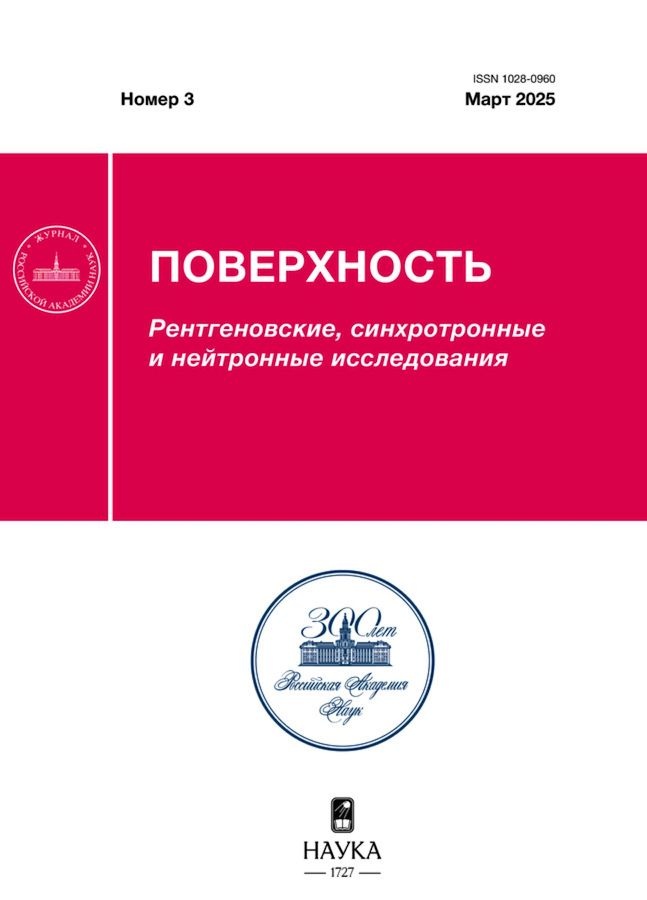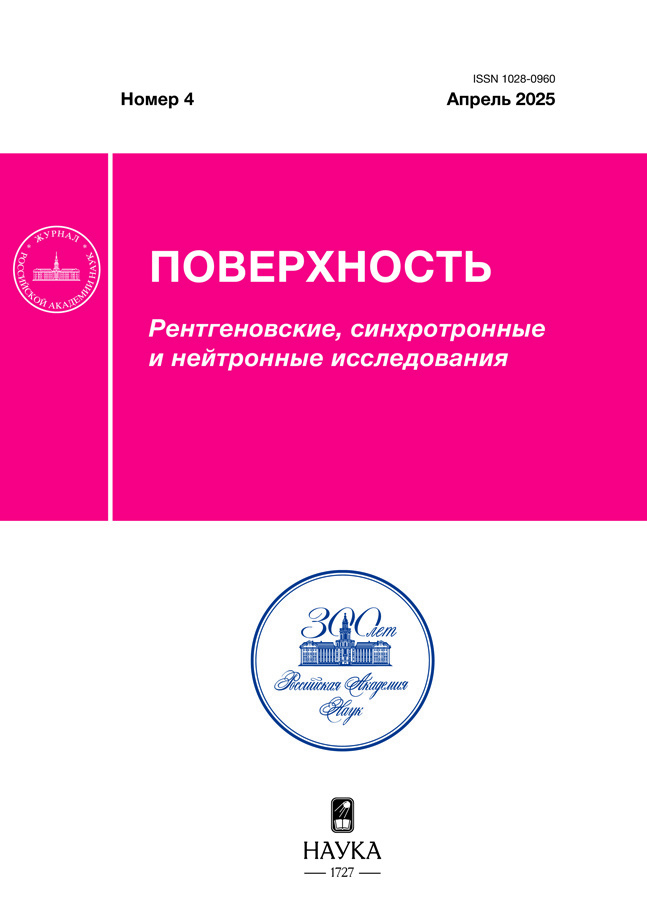Расшифровка рентгеновских фотоэлектронных спектров образцов Ge(111), GeO2/Ge(111), C60F18/Ge(111) с помощью квантово-химических расчетов
- Авторы: Шрамков Е.А.1, Андреев А.А.1, Чумаков Р.Г.1, Станкевич В.Г.1, Суханов Л.П.1
-
Учреждения:
- Национальный исследовательский центр “Курчатовский институт”
- Выпуск: № 4 (2025)
- Страницы: 75-82
- Раздел: Статьи
- URL: https://ter-arkhiv.ru/1028-0960/article/view/689196
- DOI: https://doi.org/10.31857/S1028096025040113
- EDN: https://elibrary.ru/FCHVFS
- ID: 689196
Цитировать
Полный текст
Аннотация
Валентная полоса фотоэлектронных спектров комплексных образцов (многокомпонентных образцов, образцов с оксидными пленками, адсорбированными на поверхности молекулами) имеет сложную структуру, что затрудняет интерпретацию вкладов различных компонентов образца в структуру спектров. Рассмотрен метод расшифровки спектров валентной зоны в результате расчета с помощью методов квантовой химии плотности электронных состояний для физического объема — атомарной модели, наиболее полно характеризующей исследуемый образец. Оптимальное положение атомов в заданном физическом объеме расчетной модели находили с помощью итерационного метода численной оптимизации BFGS (Broyden–Fletcher–Goldfarb–Shanno) с учетом пространственного распределения потенциала, получаемого из квантово-химического расчета. Расчет производили при помощи кода, написанного на языке Python с применением библиотек ASE и GPAW (среда атомного моделирования и проекционный метод присоединенных волн в сеточной реализации), на оборудовании суперкомпьютерного вычислительного кластера. Полученные с помощью расчета данные были сравнены с измеренными фотоэлектронными спектрами различных систем, таких как Ge(111), GeO2/Ge(111), C60F18/Ge(111), C60F18/GeO2/Ge(111). Проведенный анализ позволил определить вклады различных атомов и связей в итоговый фотоэлектронный спектр, оценить толщины отдельных слоев и определить типы связей молекул с подложкой.
Полный текст
Об авторах
Е. А. Шрамков
Национальный исследовательский центр “Курчатовский институт”
Автор, ответственный за переписку.
Email: Egor@Shramkov.ru
Россия, Москва
А. А. Андреев
Национальный исследовательский центр “Курчатовский институт”
Email: Egor@Shramkov.ru
Россия, Москва
Р. Г. Чумаков
Национальный исследовательский центр “Курчатовский институт”
Email: Egor@Shramkov.ru
Россия, Москва
В. Г. Станкевич
Национальный исследовательский центр “Курчатовский институт”
Email: Egor@Shramkov.ru
Россия, Москва
Л. П. Суханов
Национальный исследовательский центр “Курчатовский институт”
Email: Egor@Shramkov.ru
Россия, Москва
Список литературы
- Электронная и ионная спектроскопия твердых тел / Ред. Фирменс Л. и др. М.: Мир, 1981. 468 с.
- Feibelman P.J., Eastman D.E. // Phys. Rev. B. 1974. V. 10. № 12. Р. 4932. https://doi.org/10.1103/PhysRevB.10.4932
- Preobrajenski A., Generalov A., Öhrwall G., Tchaplyguine M., Tarawneh H., Appelfeller S., Frampton E., Walsh N. // J. Synchrotron Radiat. 2023. V. 30. P. 831. https://doi.org/10.1107/S1600577523003429
- Eidhagen J., Larsson A., Preobrajenski A., Delblanc A., Lundgren E., Pan J. // J. Electrochem. Soc. 2023. V. 170. № 2. Р. 021506. https://doi.org/10.1149/1945-7111/acba4b
- Hryniewicz T., Rokosz K., Sandim H.R.Z. // Appl. Surf. Sci. 2012. V. 263. P. 704. https://doi.org/10.1016/j.apsusc.2012.09.060
- Wang Z., Carrière C., Seyeux A., Zanna S., Mercier D., Marcus P. // Appl. Surf. Sci. 2022. V. 576. P. 151836. https://doi.org/10.1016/j.apsusc.2021.151836
- Xiao X., Chang K., Xu K., Lou M., Wang L., Xue Q. // J. Mater. Sci. Technol. 2022. V. 167. P. 494. https://doi.org/10.1016/j.jmst.2023.05.042
- Лебедев А.М., Суханов Л.П., Бржезинская М., Меньшиков К.А., Свечников Н.Ю., Чумаков Р.Г., Станкевич В.Г. // Поверхность. Рентген., синхротр. и нейтрон. исслед. 2017. № 8. С. 30. https://doi.org/10.7868/s0207352817080042
- Mikoushkin V.M., Bryzgalov V.V., Nikonov S.Yu., Solonitsyna A.P., Marchenko D.E. // Физика и техника полупроводников. 2018. Т. 52. Вып. 5. С. 506. https://doi.org/10.21883/ftp.2018.05.45850.39
- Лебедев А.М., Меньшиков К.А., Назин В.Г., Станкевич В.Г., Цетлин М.Б., Чумаков Р.Г. // Поверхность. Рентген., синхротр. и нейтрон. исслед. 2021. № 10. С. 44. https://doi.org/10.31857/S1028096021100125
- Larsen A.H., Mortensen J.J., Blomqvist J. et al. // J. Phys.: Condens. Matter. 2017. V. 29. P. 273002. https://doi.org/10.1088/1361-648X/aa680e
- Mortensen J.J., Larsen A.H., Kuisma M. et al. // J. Chem. Phys. 2024. V. 160. Iss. 9. P. 092503. https://doi.org/10.1063/5.0182685
- Larsen AH., Vanin M., Mortensen J.J., Thygesen K.S., Jacobsen K.W. // J. Phys.: Condens. Matter. 2009. V. 80. P. 195112. https://doi.org/10.1103/PhysRevB.80.195112
- Gandus G., Valli A., Passerone D., Stadler R. // J. Chem. Phys. 2020. V. 153. Iss. 19. P. 194103. https://doi.org/10.1063/5.0021821
- Maniopoulou A., Davidson E.R.M., Grau-Crespo R., Walsh A., Bush I.J., Catlow C.R.A., Woodley S.M. // Comput. Phys. Commun. 2012. V. 183. Iss. 8. P. 1696. https://doi.org/10.1016/j.cpc.2012.03.009
- Bairagi K., Bellec A., Chumakov R.G. et al. // Surf. Sci. 2015. V. 641. P. 248. https://doi.org/10.1016/j.susc.2015.05.020
Дополнительные файлы















